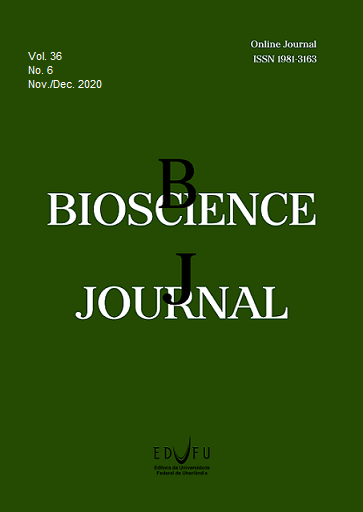Characterizing the vaquejada horse herd in the brazilian state of Pernambuco
DOI:
https://doi.org/10.14393/BJ-v36n6a2020-48845Keywords:
Competitions., Equine., Equus caballus., Morphometric indices, Training.Abstract
This study aimed to determine the age groups, breeds, and morphological characteristics of horses used in vaquejada competitions, as well as to define how often the animals compete, the results achieved in the contests, and the duration of training. A sample of 1,271 horses used in vaquejada competitions was employed in the study. The first step consisted in interviewing owners to obtain information on the age and breed of the horses, vaquejada circuits in which they compete, frequency of competition in vaquejada, results reached in the trials, and training duration per month, week, and day. The second step obtained 15 linear measurements and calculated eight morphometric indices. The data obtained from the interviews were submitted to descriptive statistical analyses. The linear measurements and morphometric indices were used to compare sexes using a completely randomized experimental design. The results showed that 80.3% of the vaquejada horses were between four and ten years old and that 89% of the animals were of the Quarter Horse. The morphometric measures showed that stallions had higher height at withers, back, and croup and wider heads, chest, and croup than mares and geldings. On the other hand, among the eight indices calculated, only the value of the height at the chest of the stallions was higher than the mean values in mares and geldings. It was found that 79.7% of the horses took part in two to four vaquejada trials a month while 93.3% of the animals underwent fitness training 12 months a year. The results show a predominance of Quarter Horses in the vaquejada contests in Pernambuco and that the trials require the selection of physically larger and stronger stallions. In addition, the animals are submitted to intense training and competition routines.
Downloads
Published
Issue
Section
License
Copyright (c) 2020 Paula Barbosa Torres, Juliano Martins Santiago, Jorge Eduardo Cavalcante Lucena, Gustavo Simões Lima, Daniel Anderson de Souza Melo, Alisson Vinícius Mota Moraes, Andreza Correia da Silva, Diogo Gutemberg Nascimento Bezerra

This work is licensed under a Creative Commons Attribution 4.0 International License.





